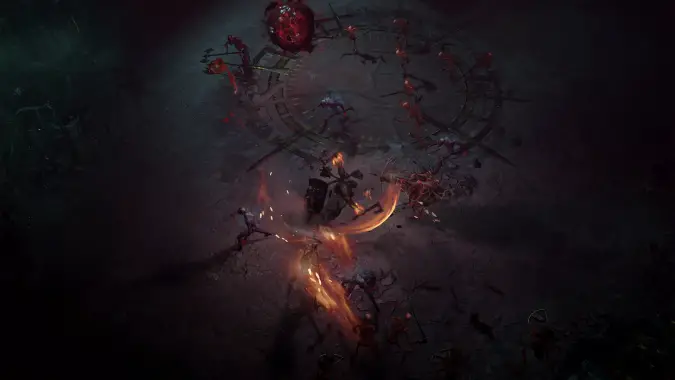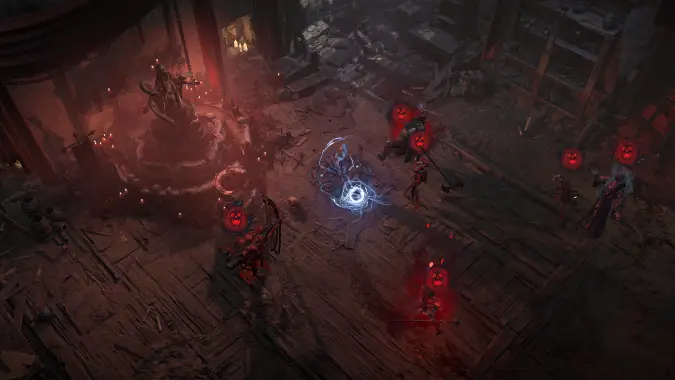How to make the most of the Resistance changes in Diablo 4 patch 1.2.0

Diablo 4‘s upcoming patch 1.2.0 is reworking a lot of in-game systems when Season of Blood starts on October 17, with Elemental Resistance and Armor receiving significant changes that will persist across the Seasonal and Eternal realms. Right now, Elemental Resistance is an afterthought when you’re levelling a character and creating a build. In Season of Blood and beyond, Blizzard wants Elemental Resistance to be a meaningful stat that contributes to a character’s survivability and to attain that they’ve changed how Elemental Resistance is calculated and how it interacts with other Jewelry and Armor pieces, and adjusted the different sources of Resistance to be more impactful.
How Elemental Resistances work now
In Season of the Malignant, all Resistance values from your items stack inverse multiplicatively (a term Blizzard uses to describe diminishing returns). In short, this means for each piece of gear a character equips that provides resistance against a certain element’s damage, the less effective that piece is. If two separate items each provide 20% fire resistance, one item would be adjusted to provide only 16% resistance for a total of 36%. To offset the diminishing return, Resistances don’t have a hard cap and can be added to indefinitely.
In theory, the main source of Elemental Resistance should come from Jewelry (Rings and Amulet) because each item intrinsically provides Elemental Resistances to two random element types that can be boosted further with gems, leaving Armor to primarily reduce physical damage a character takes. In-game is a different story — in addition to providing Elemental Resistance, Armor pieces also mitigate damage against a character based on two additional categories: Physical Damage Reduction and Non-Physical Damage Reduction, which includes initial elemental damage and elemental damage over time. Since Non-Physical Damage Reduction isn’t considered Elemental Resistance, it effectively sidesteps the diminishing return penalties from the other sources on Jewelry and Armor, giving a character better overall protection to elemental damage than Elemental Resistances from Jewelry and Armor.

How Resistances will work starting in the Season of Blood
Once patch 1.2.0 goes live, all sources of Resistances will be additive instead of inverse multiplicative, so 20% resistance plus 20% resistance equals 40% total resistance. There will be a new Resistance category in the Stats menu showing you how much Elemental Resistance a character has. Armor items will no longer calculate Elemental Resistance and Non-Physical Damage Reduction separately. Instead, Resistance will contribute to Non-Physical Damage Reduction as a Single Resistance affix or All Resistance affix while the Armor stat value will instead contribute to Physical Damage Reduction only. Jewelry will continue to have two inherent resistances: a static Resistance against All Elements and second random Elemental Resistance.
There is a soft cap of 70% for each Resistance type though there will be new item slots, elixirs, Skill Tree points, and Paragon Board slots that give each character different avenues to boost their Resistance to a maximum hard cap of 85%. Players should be able to reach the 70% cap organically around level 80. Something to keep in mind if you’re adventuring in World Tier 3 or World Tier 4 is the respective -25% and -50% Resistance to All Elements debuff applied to the characters in those tiers.
Making the most of Resistances
At its core, the changes to Resistances system means there is a greater benefit to investing in full Resistance against certain elements instead of going for an umbrella approach to minimizing elemental damage. The new system encourages players to learn each activity and utilize their existing knowledge of encounters and enemy types to design better builds and focused loadouts as they adventure. Since item rolls scale as a character progresses, there’s always room for evaluating each new piece of gear to see if it has a place in your inventory, no matter how circumstantial.
Items won’t be the only significant influence on Resistances because Paragon Boards and gems are being reworked to meaningfully contribute starting in Season of Blood. Other items like elixirs will contribute too but in terms of really maximizing a specific build Paragon Boards and gems provide more consistent boosts that you will want to capitalize on.
Paragon Board
Single Resistance Paragon nodes:
- Rare: +10%
- Magic: +5
All Resistance Paragon Nodes:
- Rare: +3%
- Magic: +1.5%
Gems
Single Resistance affixes for each gem type:
- Crude: +8%
- Chipped: +13%
- Normal: +18%
- Flawless: +24%
- Royal: +30%
All Resistance affixes from Diamond gems:
- Crude: +1%
- Chipped: +2%
- Normal: +3%
- Flawless: +4%
- Royal: +5%
Numbers on a screen can be good (or bad) but ultimately it’s about how they play, which is always different in real time. Still, a lot of the patch 1.2.0 changes to leveling, activities, and Unique rewards seems like it’s putting Diablo 4 in a position that respects the players time and rewards them for playing more than it did this past season. Patch 1.2.0 and Season of Blood arrive on October 17, so keep an eye on the site to stay in the loop about these and any other new gameplay changes!
Please consider supporting our Patreon!
Join the Discussion
Blizzard Watch is a safe space for all readers. By leaving comments on this site you agree to follow our commenting and community guidelines.
 @Quaximus
@Quaximus




